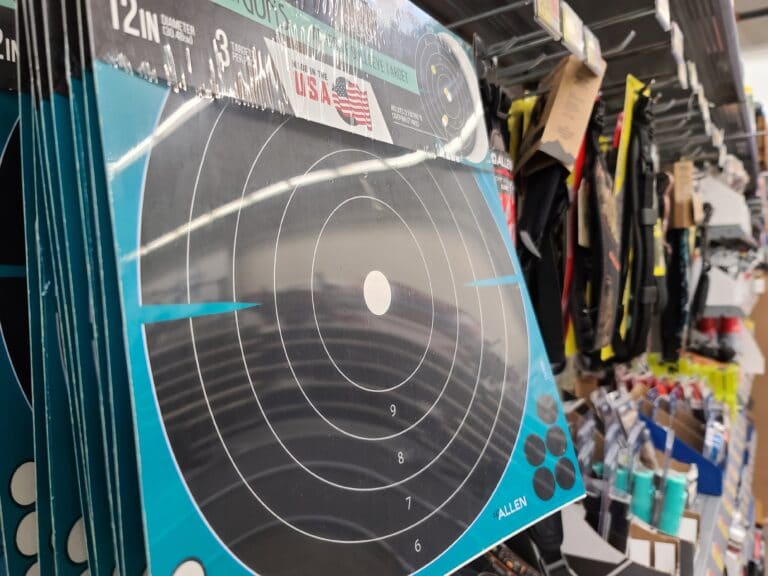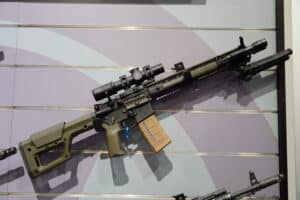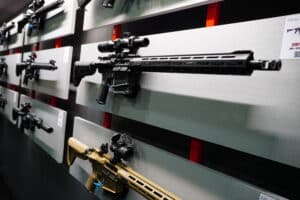A newly prominent justification for barring younger adults from buying guns relies on a faulty reading of history.
Throughout the country, there are legal challenges to restrictions on the gun rights of 18-to-20-year-olds. In 2022’s New York State Rifle and Pistol Association v. Bruen, the Supreme Court held that modern gun restrictions must be justified by showing historical laws that similarly restricted firearms usage. Accordingly, governments have hired historians and otherwise scoured through history to find similar restrictions to justify their laws.
One of the latest claims used to justify firearm restrictions on individuals under 21 is that, during the Founding Era, minors were unable to form enforceable contracts for the purchase of goods, and the age of majority was 21. Last month, in NRA v. Bondi, the Eleventh Circuit relied on this premise to justify upholding Florida’s restriction on the sale of firearms to 18-to-20-year-olds.
However, a deeper look at history shows this claim fails.
During the Founding Era, minors had a right to form contracts. However, as the Eleventh Circuit wrote, it was a “general rule” that contracts for the purchase of “personal property” involving minors were “voidable.” In practical terms, that meant a contract could be canceled by a minor and for a reasonable time after they turned 21. That’s because minors were considered not to have the mental capacity and maturity to understand the ramifications of signing a contract. As minors did not have the ability to form contracts which were enforceable against them, the Eleventh Circuit reasoned that, as a practical matter, minors did not have the ability to purchase firearms during that time. The Eleventh Circuit argued that represents a historical tradition of restricting the sale of firearms to minors and upheld Florida’s modern-day law on those grounds.
However, necessities were an important exception to that rule. Those under 21, often described as “infants” at the time, could enter into enforceable contracts for necessities. That applied to more than just basic necessities, such as food or shelter, and encompassed any necessity that was “essential to him in his current position in life.”
For example, an English court ruled in 1800 that a servant as well as the servant’s uniform, known as a livery, was a necessity for an army captain who was under 21.
“[A]s to the other article furnished, namely, the livery, I cannot say that it was not necessary for a gentleman in the defendant’s situation to have a servant; and if it were proper for him to have one, it was equally necessary that the servant should have a livery,” a judge wrote in Hands v. Slaney.
In 1874’s Jordan v. Coffield, a North Carolina court found “bridal outfit, and among other things a suite of chamber furniture” were necessities.
“Necessaries for which an infant may become liable, not only includes such articles as are absolutely necessary to support life, but also those that are suitable to the state, station and degree of life of the person, to whom they are furnished,” the court wrote.
In 1844’s Middlebury Coll. v. Chandler, a Vermont court explained “the law has never limited its definition of the term necessaries to those things which are strictly essential to the support of life,–as food, clothing, and medicine in sickness. The practical meaning of the term has always been in some measure relative, having reference as well to what may be called the conventional necessities of others in the same walks of life with the infant, as to his own pecuniary condition and other circumstances. Hence a good common school education, at the least, is now fully recognized as one of the necessaries for an infant.”
In 1879’s Epperson v. Nugent, a Mississippi court deemed some legal services necessities.
“What are ‘necessaries’ cannot be determined by any arbitrary and inflexible rule,” the judge in that case wrote. “It depends on circumstances, and each case must be governed by its own.”
A New Hampshire judge in 1855’s New Hampshire Mut. Fire Ins. Co. v. Noyes summed up the idea this way:
“Necessaries are such things as are useful and suitable to the party’s state and condition in life, and not merely such as are requisite for bare subsistence,” he wrote.
The Eleventh Circuit simply got the law wrong when it suggested necessaries didn’t cover firearms and only included bare essentials such as “food, clothing, education, and medicine.”
Closer to the issue here, military equipment was considered a necessity. As in Hands v. Slaney, another English court found in 1804’s Coates v. Wilson that uniforms for enlisted men under 21 were necessities.
The same reasoning would have applied to firearms for militia service.
In early America, firearms were a necessity pursuant to this definition because they were required for hunting and militia service. As noted in 2023’s Goldstein v. Hochul, many colonies even “required militiamen or free white men to bring their firearms to church and were passed so they could defend against potential attacks.” For instance, Georgia required parishioners to carry guns and church officials to report any who didn’t show up armed to the authorities.
Thus, it follows that a minor could enter into an enforceable contract to purchase a firearm.
In some colonies, including North Carolina, Louisiana, Maine, and Missouri, parents were expected to provide firearms to their children under 21 for militia service. But minors who were orphans or otherwise estranged from their parents also had to get their arms somehow. They likely would have needed to buy them either by cash or contract.
The Eleventh Circuit’s conclusion to the contrary relies heavily on a South Carolina case that found pistols were not a necessity. “Importantly, ‘liquor, pistols, powder, saddles, bridles, [and] whips’ were not necessaries,” it wrote, quoting 1832’s Saunders Glover & Co. v. Ott’s Adm’r. However, the Saunders court was merely ruling that under the specific circumstances of the case, the pistols at issue were luxuries.
During that period, pistols were only effective at close range. So, pistols were not typically used by foot soldiers during militia service. And most militiamen were foot soldiers. Muskets and certain other long arms were the arms required for militia service during the period, as the Militia Act of 1792 demonstrates, because they were effective when used by infantrymen.
For the same reasons, pistols typically were not used for hunting. Muskets and other long arms would have been essential to the average 18–20-year-old to maintain his current position in life during the Founding Era because they allowed him to engage in hunting and militia service.
The Eleventh Circuit erred in making a blanket statement about firearms not being a necessity by relying on one case about pistols, which are a discrete type of firearm that weren’t typically used for militia service or hunting during the Founding. Furthermore, the Saunders Court did not find that pistols could never be a necessity.
The legal rule it articulated is “[t]he articles in such case, ought to appear to be necessary for him, and plainly and clearly so, and to be furnished at reasonable prices.” The Court was simply saying in these particular circumstances the pistol at issue was not a necessity. It was not making a blanket statement about pistols in general.
Evidence that this is the correct interpretation of Saunders is found in 1855’s New Hampshire Mut. Fire Ins. Co. v. Noyes, where the court concluded “horses and necessary work in regard to such horses may be necessaries.” Remember the Saunders Court also found that the “saddles, [and] bridles” the Defendant purchased were not necessities. If in some circumstances, a horse is a necessity, then in those same circumstances, saddles and bridles must be as well because a horse cannot be effectively ridden without them.
Had the minor at issue in Saunders been serving in the cavalry, his pistol may have very well been a necessity because “[p]istols were an important cavalry weapon” at the time, according to the National Park Service. Furthermore, there is nothing in Saunders that supports finding long arms could not be necessities.
Under the general rule for necessities, muskets, rifles, and fowling pieces (shotguns) would have qualified as necessities because they were almost universally required for hunting and/or militia service. Further evidence of this is the bankruptcy law of the time applied a similar standard to the law governing the contracts of minors. In some circumstances, “arms” were “necessary for upholding life” and thus exempt from seizure.
In 1650, Connecticut passed a law that allowed court officers, upon “execution of Civill Actions… to breake open the dore of any howse, chest or place” where goods liable to execution were, except that “it shall not bee lawfull for [an] officer to [levy] any mans…armes” or any other implements “which are for the necessary upholding of his life.” Similarly, the federal Militia Act of 1792 exempted militia arms “from all suits, distresses, executions or sales, for debt or for the payment of taxes.” In 1831’s Fry v. Canfield, the court reiterated that military equipment is “exempt from attachment and execution by the 32nd section of the militia act.” In 1824’s Corcker v. Spencer, the court found “tools, arms, or articles of household furniture” could be exempt from bankruptcy-related seizures.
Thus, the record indicates that arms deemed essential to someone under 21 to maintain his position in life would have been necessities under the law. The evidence further suggests that during the Founding Era, the typical minor could enter into enforceable contracts to purchase firearms such as rifles and shotguns because they were necessities. That contradicts what the Eleventh Circuit held and implies historical restrictions on minors’ ability to contract aren’t good analogues for modern-day restrictions on adults under 21 from purchasing firearms.






